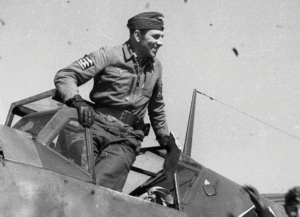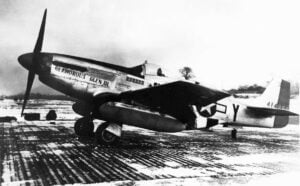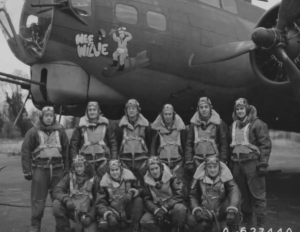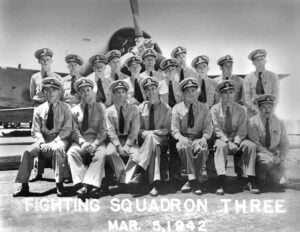WWII B-17F “Black Jack” Discovered 48 Years Later, Remarkably Preserved, Crew Survived the War After Ditching It
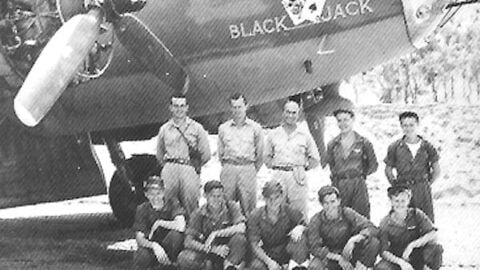
United States Army Air Force, Public domain, via Wikimedia Commons
The Pacific Ocean holds countless secrets from the Second World War. Among them, a 30-ton B-17F bomber, known as Black Jack, rests upright on a sandy seabed near Papua New Guinea, almost 50 years after it was ditched. Its green glass nose, unbroken, frames a world that has long moved on, while gun turrets remain in place as if guarding the open water. The bomber seems frozen in time, yet the real story lies in the crew who walked away. How ten men survived a controlled crash of such magnitude, and why the wreck remained nearly intact, challenges both imagination and engineering.
This discovery is more than a relic. It is a glimpse into the precision, courage, and luck that defined life and death at 20,000 feet. The B-17F, a heavy four-engine bomber, was a cornerstone of the air war in the Pacific. Each aircraft carried a crew of ten: pilot, co-pilot, navigator, bombardier, flight engineer, radio operator, and four gunners. Its Wright R1820 Cyclone engines produced 1,800 horsepower each, enough to propel a fully loaded bomber at 160 knots at altitude. A fully equipped B-17F could weigh over 54,000 pounds, including bombs, fuel, and ammunition. Ditching such a machine demanded strict adherence to procedure.
The Mission to Rabul
In June 1943, Black Jack lifted off from Port Moresby, New Guinea, loaded with eight 500-pound bombs and enough fuel for a seven-hour round trip. Its target was the harbor at Rabul, New Britain, a heavily defended Japanese base. The approach involved 400 nautical miles over open water with no nearby landing options. Anti-aircraft batteries and enemy fighters created a deadly gauntlet. The bomber managed the attack as planned, but on the return flight, problems emerged. Fuel gauges were off, and one engine lost power. The crew had to decide quickly whether to risk a dark-water ditch near Port Moresby or attempt a controlled landing in daylight, with enough altitude to maintain control. The pilot’s choice to prepare for ditching over a suitable stretch of open sea would save them all.
Ditching a B-17F required exact settings. Flaps had to remain at one-quarter, landing gear retracted, bomb bay doors closed, and airspeed carefully controlled. These measures prevented the plane from tumbling or breaking apart on impact. The crew rehearsed the checklist in flight, adjusting for sea conditions. The chosen zone had three-foot swells running northwest to southeast, manageable enough for a controlled approach. At 50 feet above the water, the pilot flared gently, letting the fuselage settle, tail first, followed by the belly. The bomber decelerated from 95 knots to zero over roughly 300 feet. The structure buckled slightly but did not fail. Water entered through seams but did not shatter the airframe.
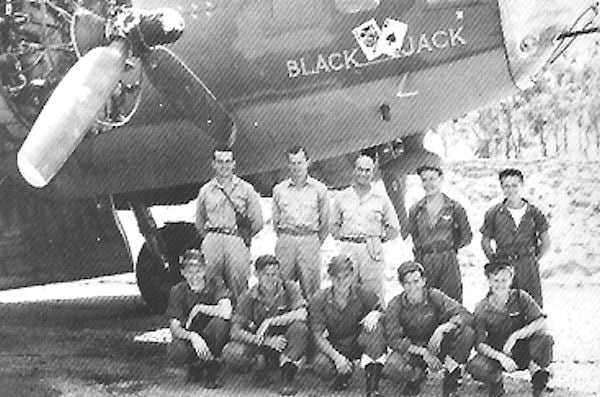
Survival and Escape
Within 90 seconds, all ten crew members evacuated using waist hatches, bomb bay access, and cockpit escape panels. Life rafts deployed automatically, inflating before the aircraft sank bow first. Injuries were minor: bruises from deceleration and one sprained wrist. The men paddled eight kilometers to the nearest coastline, spotted by villagers who launched canoes to assist. By the following morning, the crew had reached safety. Their survival was the result of training, disciplined execution, and favorable conditions.
Black Jack was recorded as lost at sea. Wartime coordinates, based on dead reckoning, were approximate. Rescue operations succeeded, but the aircraft itself disappeared beneath the waves. Families were informed of the crew’s survival, yet the precise location of the wreck remained unknown. For 43 years, Black Jack existed only in memory and sparse squadron records. Local fishermen spoke of unusual sonar returns, and elders told stories of a bomber going down in the area.
Rediscovery and Preservation
In the mid-1980s, divers used wartime coordinates and local knowledge to narrow a search area off Boabogga Island. Systematic sonar sweeps revealed a large symmetrical object in 38 meters of water. The first visual descent confirmed a B-17F upright, nose pointed northwest, wings level. Serial numbers on the tail and unit markings identified it as Black Jack. Every detail told a story. The nose greenhouse remained intact, top turret rings rotated freely, gun stations held their swivel assemblies, and bomb bay structure was undistorted. The closed doors and shallow impact had preserved the fuselage, while corrosion matched expected rates for tropical saltwater.
Engineering analysis confirmed why the aircraft survived. Gear up prevented snagging and tumbling. Bomb bay doors kept structural rigidity. The shallow approach distributed impact forces below failure thresholds. Impact marks on turret rings told of enemy encounters, now softened by decades underwater. Divers can see the entire plane on calm days, surrounded by sand ripples and reef fish. The site is protected by strict local protocols, ensuring no interference with what is both a historical artifact and a near-war grave.
A Monument to Human Skill
The story of Black Jack illustrates the balance of preparation and fortune. Skill guided the crew through emergency procedures; luck provided calm seas, daylight, and manageable swells. Engineering provided an airframe capable of absorbing extreme stress. Together, these factors allowed survival against overwhelming odds. Black Jack is more than wreckage; it is a monument to human decision-making under pressure, a demonstration of how training, discipline, and chance align in rare moments to preserve life.
The B-17F remains upright on white sand, teaching lessons from 1943 to any who descend. No salvage attempts have been made, and local communities treat the site with respect. It stands as a reminder that survival in war is never guaranteed, but can be achieved when skill and circumstance converge. Black Jack endures as a time capsule of history, the last physical record of ten men who walked away from the sea, and an aircraft that proved what was possible when preparation met opportunity.
Keep going for the video below:

















